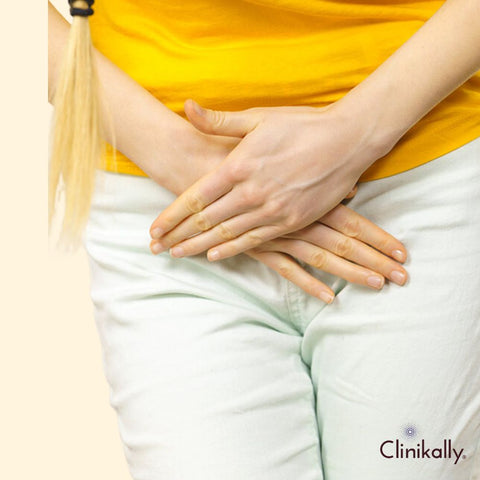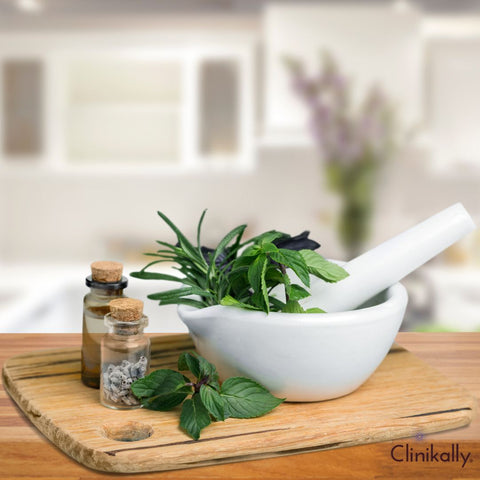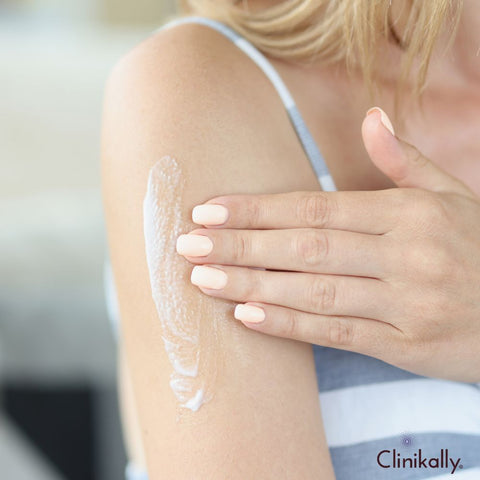Vaginal yeast infections are a common problem for many women, causing discomfort and disrupting daily life. While conventional treatments like antifungal medications are widely available, some individuals prefer natural remedies due to concerns about potential side effects or simply a preference for holistic approaches. Herbal remedies, in particular, have been used for centuries to alleviate various health issues, including yeast infections. In this guide, we'll explore some herbal remedies that may offer relief from vaginal yeast infections, along with important considerations and precautions.
Understanding Vaginal Yeast Infections:
Before delving into herbal remedies, it's essential to understand what causes vaginal yeast infections and how they manifest. Vaginal yeast infections, also known as vaginal candidiasis, are primarily caused by an overgrowth of Candida albicans, a type of yeast that naturally resides in the vagina in small amounts. However, certain factors such as hormonal changes, antibiotic use, weakened immune system, diabetes, and pregnancy can disrupt the delicate balance of microorganisms in the vagina, leading to an overgrowth of yeast and subsequent infection. Common symptoms of a vaginal yeast infection include itching, burning sensation, redness and swelling of the vulva, vaginal discharge (often thick, white, and odorless), and discomfort during urination or intercourse.
Understanding Vaginal Yeast Infections: Causes and Symptoms

Vaginal yeast infections, which are also called vaginal candidiasis, are a common problem for lots of women. To deal with and control these infections properly, it's really important to fully understand what causes them and the symptoms they cause.
Causes of Vaginal Yeast Infections:
-
Candida Albicans Overgrowth: These infections happen when there's too much of a certain type of yeast, called Candida albicans, in the vagina. Normally, other microorganisms keep this yeast in check. But sometimes, things upset this balance, leading to too much yeast and an infection.
-
Hormonal Changes: Fluctuations in hormone levels, like during your period, pregnancy, or menopause, can make it easier for yeast to grow. Higher estrogen levels, especially, can encourage Candida growth.
-
Antibiotic Use: Antibiotics can mess up the balance of microorganisms in the vagina by killing off helpful bacteria that keep yeast under control. This disruption lets Candida grow more and cause an infection.
-
Weakened Immune System: People with weak immune systems, such as those with HIV/AIDS or going through chemotherapy, are more prone to vaginal yeast infections. A weakened immune system can't fight off Candida as well, so it can multiply more easily.
-
Diabetes: Uncontrolled diabetes, especially when blood sugar levels are high, creates an environment where yeast can thrive. Extra glucose in the blood can end up in urine, making the vagina more sugary and helping yeast grow.
-
Sexual Activity: While these infections aren't usually passed through sex, certain sexual habits can up the risk. Things like frequent sex, especially with multiple partners, or using spermicides or lubricants that mess with the vagina's natural balance can make infections more likely.
Symptoms of Vaginal Yeast Infections:
-
Itching and Irritation: A big sign of these infections is intense itching and irritation around the vagina. This itchiness can stick around and get worse with things like sweat or rubbing.
-
Abnormal Discharge: The discharge during a yeast infection is usually thick, white, and lumpy, kind of like cottage cheese. It might not smell like much, or it might have a faint yeasty scent.
-
Redness and Swelling: The skin around the vagina might look red, swollen, and puffy during a yeast infection. This can add to discomfort and might come with a burning feeling.
-
Pain or Discomfort: Some women might feel pain or discomfort when they pee or have sex during a yeast infection. These symptoms can make daily life harder and lower overall comfort.
-
Burning Sensation: People with these infections might feel a burning sensation, especially when they pee or use creams on the affected area.
The Role of Candida: Unveiling the Culprit Behind Vaginal Discomfort

Candida albicans, a usual fungus found in small amounts in the vagina, plays a big part in causing vaginal yeast infections. When conditions let it grow too much, Candida can upset the balance of microorganisms in the vagina, leading to discomfort and infection.
Disrupting the Natural Balance:
The vagina normally keeps a careful mix of bacteria and yeast, including Candida albicans. Things like hormonal changes, taking antibiotics, having a weak immune system, diabetes, being pregnant, or having high estrogen levels can mess up this balance, making it easier for Candida to grow too much.
Candida Growth:
Usually, other helpful bacteria in the vagina control the Candida levels. But when this balance is thrown off, Candida can multiply quickly, causing an overgrowth that shows up as a yeast infection.
Triggering Inflammation:
When Candida grows too much, it sets off an inflammatory response in the vagina. This leads to symptoms like itching, burning, redness, and swelling. Also, Candida makes toxins that make the inflammation and discomfort worse.
Symptoms of Vaginal Yeast Infections:
Typical signs of a vaginal yeast infection include itching, a burning feeling, redness and swelling around the vulva, thick white vaginal discharge without any smell, and feeling uncomfortable when you pee or have sex. These symptoms can vary in how bad they are and might get worse if you don't treat the infection.
Recognizing the Signs: How to Identify a Yeast Infection

Spotting a yeast infection early is important to get quick relief from discomfort. Even though symptoms can differ from person to person, knowing the common signs can help you take the right steps. Here's how to recognize a yeast infection:
-
Itching and Irritation: A key sign of a yeast infection is intense itching in the vaginal area. This itchiness might come with irritation and a burning feeling, especially when you pee or have sex.
-
Abnormal Discharge: The discharge during a yeast infection is usually thick, white, and looks like cottage cheese. It might not smell like much, or it might have a faint yeasty scent. You might notice more discharge than usual, which can help tell it apart from other vaginal problems.
-
Redness and Swelling: The skin around the vagina might look red, swollen, and puffy during a yeast infection. This swelling often comes with discomfort and tenderness in that area.
-
Soreness and Discomfort: Women with yeast infections might feel sore or uncomfortable around the vagina. This discomfort can be mild or really bothersome and might get worse if you sit for a long time or wear tight clothes.
-
Painful Urination or Sex: Some people with yeast infections might feel pain or discomfort when they pee or have sex. This is usually because the yeast overgrowth irritates and inflames the vaginal tissues.
-
No Fishy Odor: Unlike bacterial vaginosis, another common vaginal issue, yeast infections usually don't make a fishy smell. The discharge might have a slight yeast-like smell or not smell at all.
-
Symptoms Persistence: If you think you have a yeast infection and the symptoms keep going or get worse over time, it's important to see a doctor for the right diagnosis and treatment.
Herbal Allies: Exploring Nature's Solutions for Vaginal Health

Herbal remedies have a history of supporting vaginal health and dealing with issues like yeast infections. While there may be varying scientific evidence for their effectiveness, many herbs are believed to have properties that can fight microbes, reduce inflammation, and soothe discomfort, ultimately promoting a balanced vaginal environment. Here are some commonly used herbal allies for maintaining vaginal health:
-
Tea Tree Oil (Melaleuca alternifolia): Known for its strong antimicrobial properties, tea tree oil is often used to fight yeast overgrowth linked to vaginal infections. It's usually diluted and applied topically or added to bathwater for its soothing effects. However, caution is needed to prevent irritation, and it should never be used without dilution.
-
Garlic (Allium sativum): Garlic contains allicin, a compound with antimicrobial properties. Some women use garlic cloves as vaginal suppositories to tackle yeast infections. But it's important to wrap the garlic in gauze and use it carefully to avoid irritation.
-
Calendula (Calendula officinalis): Calendula has both anti-inflammatory and antimicrobial properties, making it great for soothing vaginal discomfort and aiding healing. Creams or ointments containing calendula can be applied topically to relieve itching and inflammation.
-
Yogurt: Yogurt rich in probiotics like Lactobacillus acidophilus can help rebalance healthy bacteria in the vagina. Eating yogurt with live cultures or applying it topically may help maintain vaginal health by inhibiting harmful microorganisms' growth.
-
Goldenseal (Hydrastis canadensis): Known for its antimicrobial and anti-inflammatory properties, goldenseal can be used topically or orally to treat vaginal infections, including yeast infections. However, it should be used cautiously and for short periods due to potential side effects.
-
Echinacea (Echinacea spp.): Echinacea boosts the immune system, which could help the body fight off infections like yeast overgrowth. It can be taken orally or used topically for its antimicrobial effects.
-
Chamomile (Matricaria chamomilla): Chamomile has soothing and anti-inflammatory properties, making it useful for relieving vaginal irritation and discomfort. Chamomile tea can be used topically or added to bathwater for a calming effect.
Before using herbal remedies for vaginal health, it's crucial to talk to a healthcare provider, especially if you're pregnant, breastfeeding, or have underlying health issues. Also, do a patch test to check for allergies and use herbal remedies carefully to avoid any negative effects. Integrating these herbal allies into a holistic approach to vaginal health, alongside good hygiene practices and medical advice, can contribute to overall well-being and comfort.
Herbal Helpers: Keeping Your Vagina Healthy

It's important to keep your vagina healthy by maintaining the right pH balance and discharge. Some plants have special qualities that can help with this. Here's how they can help:
-
Boric Acid: This isn't a plant, but it's used to fight fungus. Doctors sometimes recommend boric acid capsules to help fix pH balance and ease yeast infection symptoms. But it's important to use it carefully under a doctor's guidance.
-
Lactobacillus spp.: These are good bacteria naturally found in the vagina. They keep the pH balanced by making lactic acid. Some herbs, like ones with Lactobacillus acidophilus, can help these good bacteria grow, which keeps the vagina healthy.
-
Aloe Vera: Aloe vera can soothe and moisturize, helping with dryness and irritation. When used on the skin, it might also help keep pH levels healthy.
-
Marshmallow Root: This plant has a gooey substance that can soothe and moisten vaginal tissues. It might help keep pH balanced and support normal discharge.
-
Witch Hazel: Witch hazel tightens tissues and can help with pH balance when used on the skin.
-
Cranberry: Cranberry is famous for helping with urinary tract health. Some research suggests it might also help keep the vagina healthy by balancing bacteria and pH levels.
-
Probiotic Herbs: Some herbs, like dandelion root and burdock root, are thought to help good bacteria grow in the gut and vagina. This can indirectly keep pH balance and discharge healthy.
When using these herbs, it's important to also practice good hygiene, like wearing breathable underwear and avoiding douching. If you have ongoing vaginal issues, it's best to see a doctor. And always use herbal remedies carefully, preferably with advice from a professional.
Balancing Vaginal Flora: Herbal Solutions for Candida Overgrowth

Maintaining a healthy balance of vaginal flora is crucial for vaginal health. When there's too much Candida, it can cause discomfort and infections. Herbal remedies can help restore balance and fight Candida overgrowth. Here are some herbs known for rebalancing vaginal flora and tackling Candida:
-
Calendula (Calendula officinalis):
-
Properties: Calendula fights inflammation and germs, which helps with fungal infections.
-
Application: Use calendula cream or tea externally on the vulva to reduce inflammation.
-
Coconut Oil:
-
Properties: Coconut oil has acids that fight fungus, like Candida.
-
Application: Use coconut oil outside your vagina as a moisturizer, or mix it with other oils like tea tree oil.
-
Goldenseal (Hydrastis canadensis):
-
Properties: Goldenseal has a compound called berberine, which fights germs like Candida.
-
Application: Dilute goldenseal in water and use it as a vaginal wash, or take it as a supplement.
-
Probiotics:
-
Properties: Probiotics with Lactobacillus strains help balance good bacteria in the vagina, fighting harmful germs like Candida.
-
Application: Take probiotic supplements or eat probiotic-rich foods like yogurt.
-
Cranberry:
-
Properties: Cranberries have compounds that stop Candida from sticking to vaginal cells.
-
Application: Drink unsweetened cranberry juice or take cranberry supplements for urinary and vaginal health.
-
Tea Tree Oil (Melaleuca alternifolia):
-
Properties: Tea tree oil is well-known for its potent antimicrobial properties, including activity against Candida albicans, the fungus responsible for most yeast infections.
-
Application: Dilute tea tree oil in a carrier oil, such as coconut oil, and apply it externally to the vaginal area for its antifungal effects. Alternatively, add a few drops of bathwater for a soothing soak.
Remember to talk to a healthcare professional before using herbal remedies, especially if your symptoms don't get better. Also, consider other lifestyle changes like hygiene, diet, and stress management for the best results.
Holistic Healing: Integrating Herbal Medicine into Your Wellness Routine

Herbal medicine takes a holistic approach to wellness, caring for your body, mind, and spirit. Here's how you can weave herbal remedies into your daily routine to feel balanced and vibrant:
- Research herbs that match your wellness goals. Seek advice from herbalists or healthcare pros to find what suits you best.
- Enjoy herbal teas for relaxation or immune support. Chamomile, lemon balm, or lavender teas can calm you, while echinacea or elderberry teas can boost your immunity.
- Apply herbal salves or oils to your skin for soothing relief. They can ease muscle tension, heal wounds, or address skin issues.
- Use aromatic essential oils to create a healing atmosphere. Peppermint or eucalyptus oils can refresh you, while lavender or bergamot can help you unwind.
- Add dried herbs like chamomile or rose petals to your bath for a calming experience. Herbal baths relax muscles and promote overall well-being.
- Support your health with herbal supplements, but choose wisely and follow dosage recommendations.
- Experiment with mixing herbs to create teas, tinctures, or topical remedies that resonate with you.
- Enhance your wellness journey with activities like meditation or yoga. Pair them with herbal remedies for a holistic approach.
- Consult herbalists or healthcare providers for personalized guidance. They can help you create a wellness plan that fits your needs.
Herbal Preparations: Best Practices for Safe and Effective Use

When utilizing herbal preparations for treating yeast infections, it's essential to adhere to best practices to ensure both safety and effectiveness. Here are some guidelines to follow:
-
Research and Select Quality Herbs: Thoroughly research the herbs you plan to use and choose high-quality, organic herbs from reputable sources. Ensure that the herbs have not been contaminated and are free from additives.
-
Consult with a Healthcare Professional: Before using herbal remedies, consult with a healthcare professional, particularly if you have underlying health conditions, are pregnant, or are breastfeeding. They can provide personalized advice and ensure that the chosen herbs are safe for you.
-
Understand Dosage and Administration: Familiarize yourself with the proper dosage and administration of herbal preparations. Follow recommended guidelines provided by healthcare professionals or trusted sources. Use measuring tools to ensure accurate dosing.
-
Start with Small Doses: Begin with a low dosage of herbal remedies, especially if you are new to using them or have a sensitive constitution. Monitor your body's response closely and adjust the dosage as needed.
-
Be Mindful of Potential Interactions: Some herbs may interact with medications or other herbs, leading to adverse effects. Research potential interactions and consult with a healthcare professional if you are taking medications concurrently.
-
Use Caution with Topical Applications: When applying herbal preparations topically, perform a patch test on a small area of skin to check for allergic reactions or sensitivities. Dilute essential oils appropriately to avoid skin irritation.
-
Store Herbal Preparations Properly: Store dried herbs and herbal preparations in a cool, dry place away from direct sunlight. Use airtight containers to preserve their potency and prevent contamination.
-
Monitor for Side Effects: Pay attention to any adverse reactions or side effects that may occur after using herbal preparations. Discontinue use if you experience persistent discomfort or adverse effects, and seek medical attention if necessary.
-
Be Patient and Persistent: Herbal remedies may take time to produce noticeable effects. Be patient and consistent in your use of herbal preparations, and give your body time to respond.
-
Maintain Good Hygiene Practices: Alongside herbal treatments, practice good hygiene habits to support vaginal health. Avoid douching and opt for gentle, pH-balanced cleansing products.
Nurturing Your Body: Self-Care Practices for Vaginal Health

Maintaining vaginal health is vital for overall well-being. Here are some self-care practices to support a healthy vaginal ecosystem and prevent issues like yeast infections:
Good Hygiene:
Wash the external genital area with mild, unscented soap and water daily.
Avoid harsh soaps, douches, or feminine hygiene products that can disrupt the natural pH balance.
Wipe from front to back after using the toilet to prevent bacterial spread.
Breathable Clothing:
Choose breathable underwear made from cotton to allow air circulation and prevent moisture buildup.
Avoid tight-fitting clothes that can trap moisture and encourage yeast growth.
Stay Hydrated:
Drink plenty of water to maintain hydration levels, which is crucial for vaginal health.
Balanced Diet:
Eat a balanced diet with fruits, vegetables, whole grains, and lean proteins to support immune function.
Limit sugary foods and refined carbohydrates to prevent yeast overgrowth.
Safe Sex:
Use condoms correctly and consistently to reduce the risk of STIs and harmful bacteria transmission.
Communicate openly with your partner about sexual health concerns.
Stress Management:
Practice stress-reduction techniques like mindfulness or yoga to promote relaxation and reduce cortisol levels.
Regular Exercise:
Engage in physical activity to improve blood circulation and immune function.
Avoid Irritants:
Be cautious of scented products, perfumes, or harsh chemicals that can irritate the vaginal area.
Seek Medical Attention:
Pay attention to any unusual symptoms like discharge, itching, or pain.
Consult a healthcare professional for persistent or severe symptoms.
Self-Examination:
Perform regular self-examinations to monitor for any changes or abnormalities that may require medical attention.
Listen to Your Body: Recognizing When to Seek Professional Help

Recognizing when to seek professional medical attention is essential for managing vaginal health. Here are signs indicating it's time to consult a healthcare provider:
-
Persistent Symptoms: If itching, burning, discharge, or discomfort in the vaginal area persist despite self-care efforts, it's time to see a healthcare provider.
-
Unusual Discharge: Changes in discharge color, consistency, or odor may indicate an infection or imbalance. Seek medical attention for unusual discharge, especially if accompanied by other symptoms.
-
Pain During Intercourse: Pain, discomfort, or bleeding during sex could signal various vaginal health issues. Consult a healthcare provider to identify the cause.
-
Recurrent Infections: Frequent yeast infections or other vaginal infections may suggest underlying issues requiring medical attention.
-
Presence of Sores: Sores, lesions, or abnormal growths in the vaginal area should be evaluated by a healthcare provider promptly.
-
Burning Urination: Burning, stinging, or pain while urinating could indicate a UTI or other infection needing medical evaluation.
-
Fever or Chills: Fever, chills, or flu-like symptoms with vaginal discomfort may signal a serious infection needing medical treatment.
-
Changes in Vulvar Appearance: Any changes in vulvar appearance, like redness or swelling, should be evaluated by a healthcare provider.
-
During Pregnancy: If pregnant and experiencing vaginal symptoms or discomfort, consult a healthcare provider promptly.
-
Sexual Health Concerns: Discuss concerns about sexual health, contraception, or reproductive issues with a healthcare provider for guidance and appropriate care.
Embracing Holistic Wellness: Personalized Recommendations for Women's Health

Achieving holistic wellness involves caring for all aspects of your health, including physical, mental, and emotional well-being. Here are some tailored recommendations for women's health:
-
Regular Health Screenings: Schedule routine check-ups for mammograms, Pap smears, and pelvic exams. Stay updated on vaccinations, like HPV vaccines and flu shots.
-
Hormonal Balance: Monitor hormonal changes and seek help for symptoms like mood swings or fatigue. Explore holistic approaches such as acupuncture or dietary changes.
-
Nutrient-Dense Foods: Eat a balanced diet with fruits, veggies, whole grains, lean proteins, and healthy fats. Consider foods rich in calcium and vitamin D for bone health, especially during menopause.
-
Mindful Movement: Engage in activities you enjoy, like yoga or walking. Include strength training to support bone density and muscle strength as you age.
-
Stress Management: Practice stress-reduction techniques like meditation or journaling. Make time for self-care activities that relax and rejuvenate you.
-
Supportive Relationships: Surround yourself with supportive people who uplift you. Communicate openly and seek help when facing challenges.
-
Listen to Your Body: Pay attention to changes or symptoms and seek professional help if needed. Trust your instincts and advocate for your health.
-
Reproductive Health: Discuss contraception, family planning, and reproductive concerns with your healthcare provider. Seek guidance for menstrual irregularities, fertility, or menopause symptoms.
-
Mental and Emotional Well-Being: Prioritize mental health through therapy or support groups. Practice self-compassion, mindfulness, and gratitude.
-
Stay Informed and Advocate: Stay updated on women's health issues and advocate for yourself and others.
Honoring Your Body: Customizing Your Wellness Journey

Every person's journey to wellness is unique. Here are personalized tips, especially for women's health:
-
Know Yourself: Understand how your body responds to different foods, activities, and lifestyles.
-
Set Attainable Goals: Establish realistic goals that reflect your values. Start small and track your progress.
-
Prioritize Self-Care: Make time for activities that rejuvenate you, like meditation or creative hobbies.
-
Focus on Nutrition: Eat nutrient-rich foods that support women's health. Experiment with different diets to find what suits you best.
-
Stay Active: Find enjoyable ways to move your body regularly, whether it's yoga, dancing, or hiking.
-
Build Supportive Relationships: Surround yourself with positive influences and meaningful connections.
-
Explore Holistic Therapies: Consider alternative therapies like acupuncture or aromatherapy to complement your wellness journey.
-
Practice Mindfulness: Incorporate mindfulness into your daily routine to reduce stress and increase self-awareness.
-
Trust Your Intuition: Listen to your instincts and make choices that feel right for you, even if they differ from mainstream advice.
-
Seek Professional Support: Consult with healthcare professionals who respect your autonomy and offer holistic approaches to women's health.
Building Resilience: Supporting Immune Health for Overall Well-Being

A strong immune system is crucial for overall health. Here's how to support your immune system and boost resilience:
-
Nutrient-Packed Diet: Eat plenty of fruits, veggies, whole grains, lean proteins, and healthy fats to give your body the nutrients it needs to fight off illness.
-
Stay Hydrated: Drink enough water and include herbal teas and soups to keep hydrated and support immune function.
-
Manage Stress: Practice relaxation techniques like meditation or yoga to reduce stress, which can weaken your immune system.
-
Quality Sleep: Aim for 7-9 hours of sleep each night to allow your body to rest and recharge.
-
Regular Exercise: Stay active with a mix of cardio, strength training, and flexibility exercises to boost immunity and overall well-being.
-
Hygiene Habits: Wash your hands frequently, disinfect surfaces, and practice good hygiene to prevent the spread of germs.
-
Smart Supplementation: Consider supplements like vitamin C, D, zinc, and probiotics to support immune health, but consult with a healthcare professional first.
-
Cut Back on Alcohol and Tobacco: Limit alcohol and avoid tobacco, as they can weaken the immune system.
-
Stay Connected: Maintain social connections to boost emotional resilience and overall wellness.
-
Practice Gratitude: Focus on the positive and express gratitude, which can reduce stress and support immune function.
Conclusion: Embracing Herbal Wisdom for Vaginal Comfort and Balance

In our exploration of herbal wisdom for vaginal comfort and balance, we've discovered the richness of natural remedies and holistic approaches. From understanding yeast infections to exploring the benefits of herbal allies, we've tapped into nature's resources to support vaginal health.
Herbal remedies offer gentle, natural solutions, backed by centuries of traditional use and modern research. Whether it's probiotic yogurt, coconut oil, or oregano oil, these botanicals provide effective support for vaginal wellness. However, it's crucial to consult with a healthcare professional to ensure safety and effectiveness for individual needs.
Beyond herbs, holistic wellness involves embracing a range of practices, including diet, lifestyle, and self-care. By prioritizing self-care, maintaining a balanced diet, managing stress, and practicing good hygiene, women can foster resilience and vitality.
As we conclude our journey into herbal wisdom for vaginal health, let's celebrate the healing power of nature and honor the intricate balance of our bodies. By listening to our bodies and embracing holistic approaches, we empower ourselves to thrive in harmony with nature's abundant gifts.















